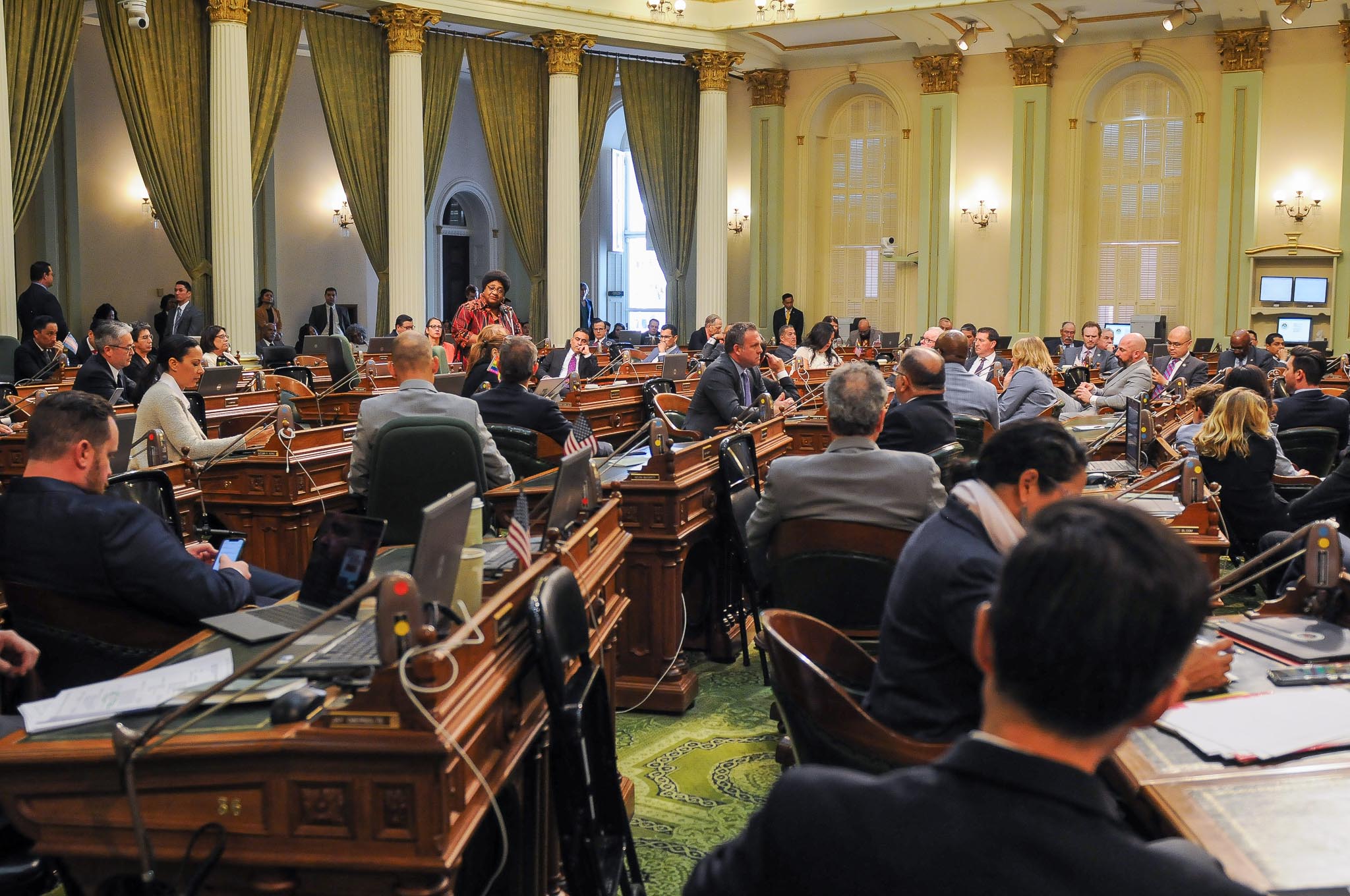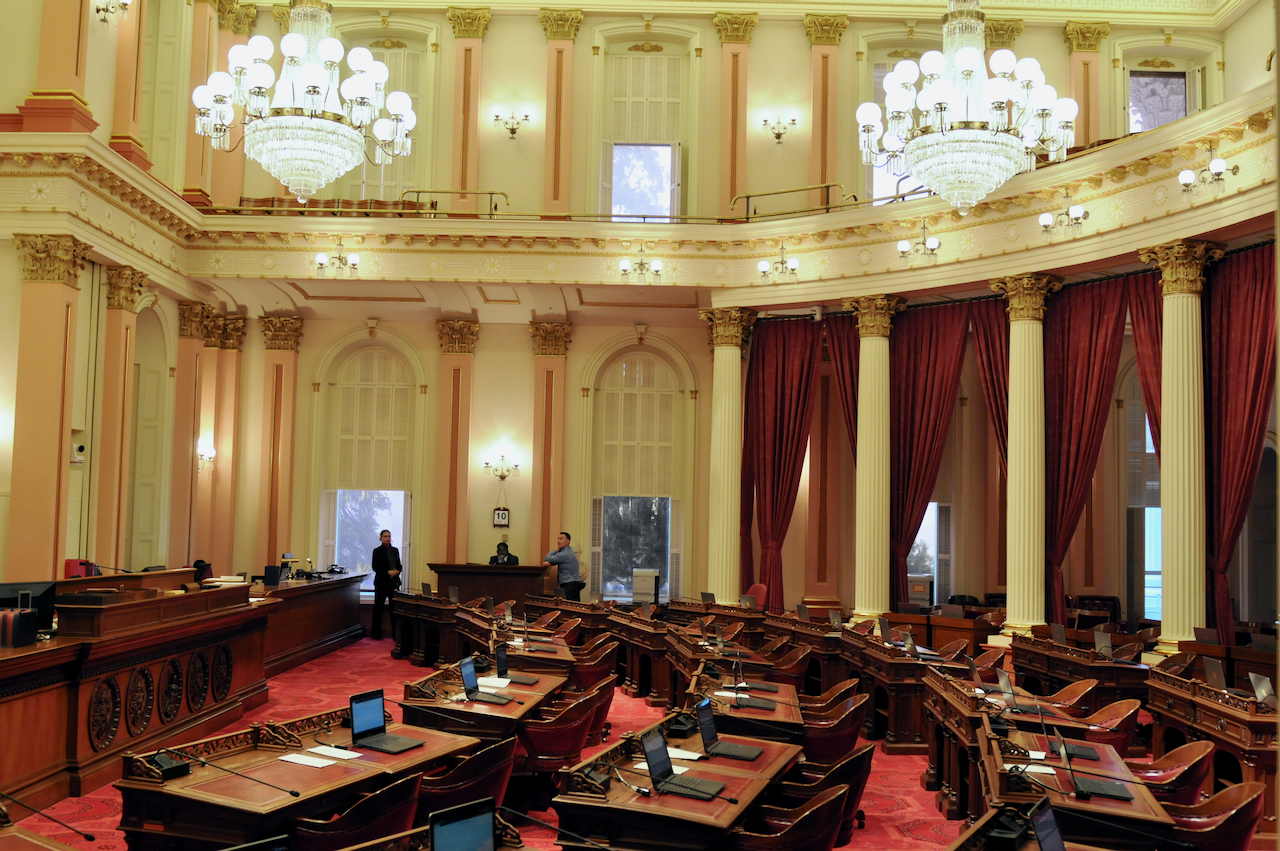
California Assembly Chambers. (Photo: Kevin Sanders for California Globe)
Some Additional Bill Drafting Rules in California
There are many constitutional, statutory, and rules-based provisions to consider
By Chris Micheli, October 16, 2022 8:40 am
When drafting bills in the California Legislature, there are many constitutional, statutory, and rules-based provisions to consider, depending on the type of bill that is being drafted. And, there are certainly some very narrow rules to be aware of when drafting these bills. The following is a discussion of some of these additional bill drafting rules to keep in mind when drafting California bills:
Contingent Enactment Language and the Single Subject Rule
When one bill has language in that bill that makes the bill’s provisions operative when something else happens, this is called “contingent enactment” language. In other words, the bill can be made contingent upon a future budget appropriation, or the enactment of a constitutional amendment, or even the enactment of another bill.
Constitution Article IV, Section 9 provides, in part: “A statute shall embrace but one subject, which shall be expressed in its title.” This is the “single subject rule” that governs in California, and requires a bill’s provisions to all be reasonably related to the same subject.
When one bill is made contingent upon the enactment of another bill, both bills must satisfy the single subject rule.
One Barely Noticed Difference Between Senate Bills and Assembly Bills
All Assembly Bills, at the top (but below amendment dates), contain the following:
CALIFORNIA LEGISLATURE— 2021–2022 REGULAR SESSION
On the other hand, all Senate Bills do not contain that provision at the top of their bills. Prior to 1983, SBs contained this provision. However, it was decided that this provision was not necessary and so the Senate does not use it for regular session bills. However, this provision is used for special session SBs (and, of course, special session ABs as well).
Adding a New Chapter to a Code
When a bill amends, adds, or repeals a section of a code, that section(s) are listed by section number in the Title of the bill, as well as in each action line.
On the other hand, when adding a new chapter, the Title lists the new chapter, along with the first code section), followed by the Relating Clause. The following is an example:
An act to add Chapter 3.15 (commencing with Section 1568.21) of Division 2 of the Health and Safety Code, relating to veterans.
In addition, after the first “action line,” the individual code sections are simply listed, along with the new statutory language. However, each new individual code section is not in a separate bill section along with an action line. The following is an example:
SEC. 2.
Chapter 3.15 (commencing with Section 1568.21) is added to Division 2 of the Health and Safety Code, immediately following Chapter 3.1, to read:
CHAPTER 3.15. Medical Foster Homes for Veterans
1568.21.
The following definitions shall apply for purposes of this chapter:
….
1568.22.
(a) The department may establish a medical foster home for veterans program in California pursuant to this chapter no sooner than July 1, 2024.
….
1568.23.
(a) No person shall operate, establish, manage, conduct, or maintain a medical foster home for veterans in this state without a current valid license, as provided in this chapter.
….
1568.24.
(a) A person seeking a license for a medical foster home for veterans under this chapter shall file with the department, pursuant to rules, regulations, and written directives, an application that shall include, but not be limited to, all of the following:
….
1568.25.
(a) The department may suspend or revoke a license issued under this chapter, in the manner provided in subdivision (b), upon any of the following grounds:
The above examples are some additional bill drafting rules in the California Legislature, along with others that are covered elsewhere.
- California Department of Child Support Services - December 24, 2025
- Mistakes in Legal Pleadings - December 23, 2025
- The Division of Property Concerning Retirement Plan Benefits - December 23, 2025





2 thoughts on “Some Additional Bill Drafting Rules in California”